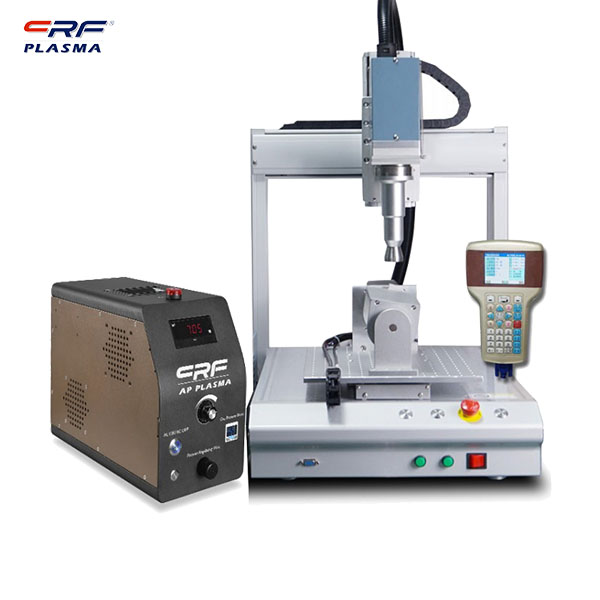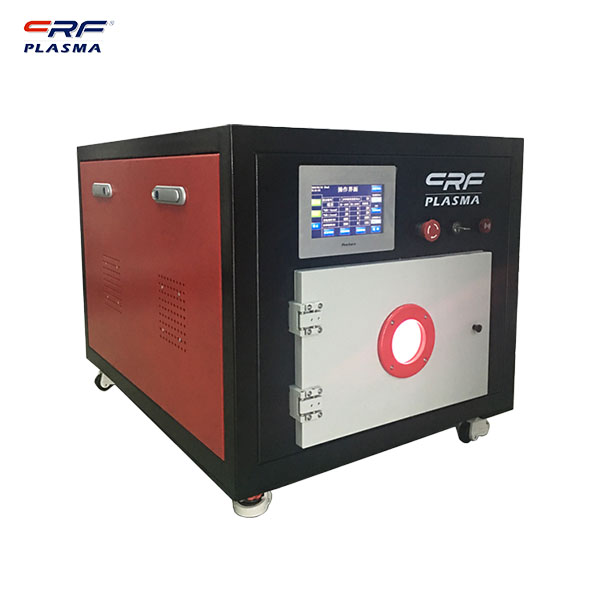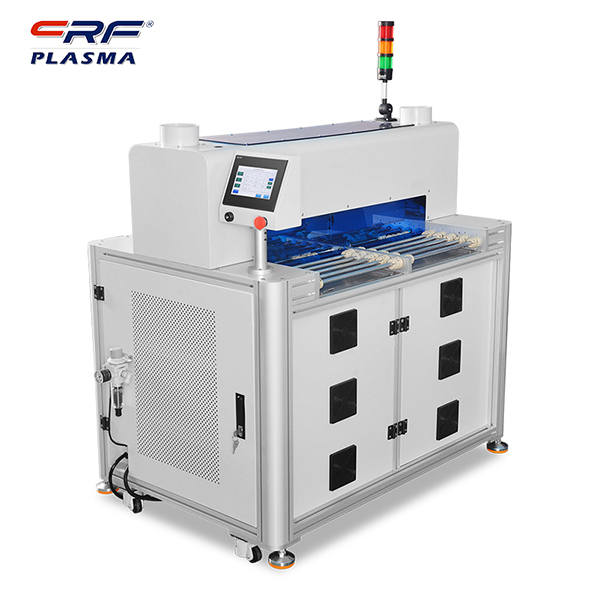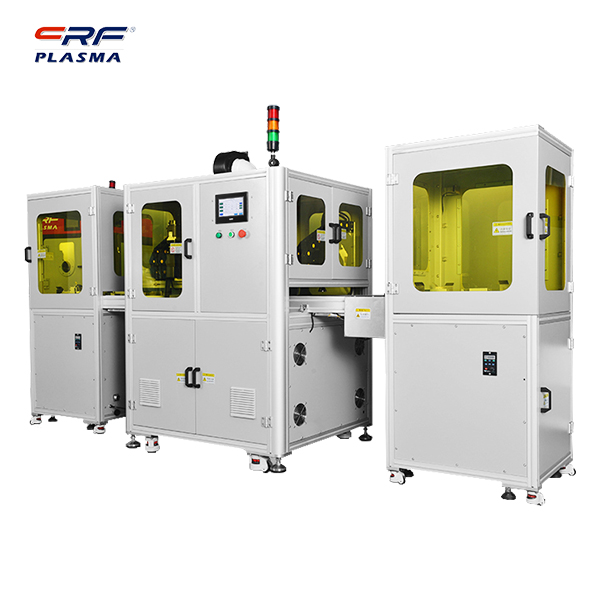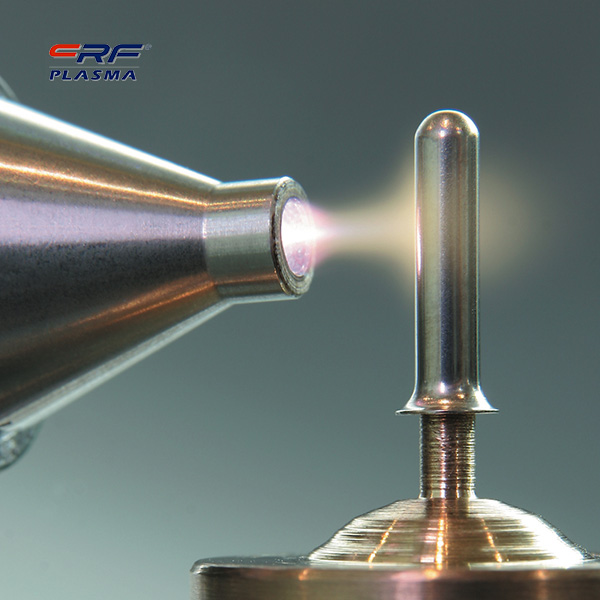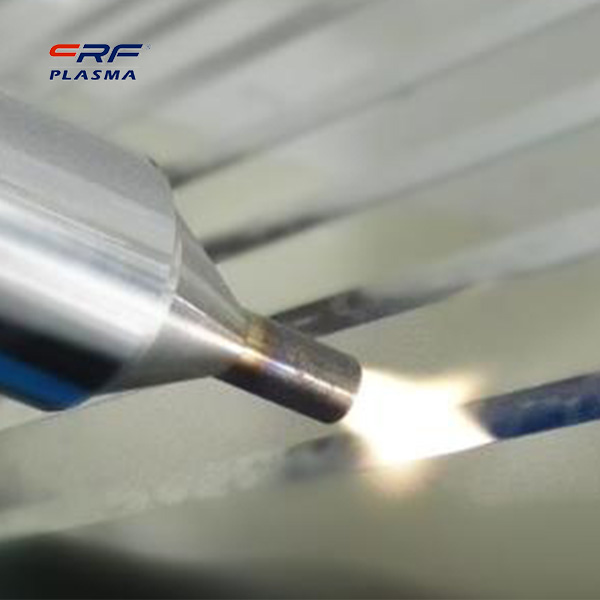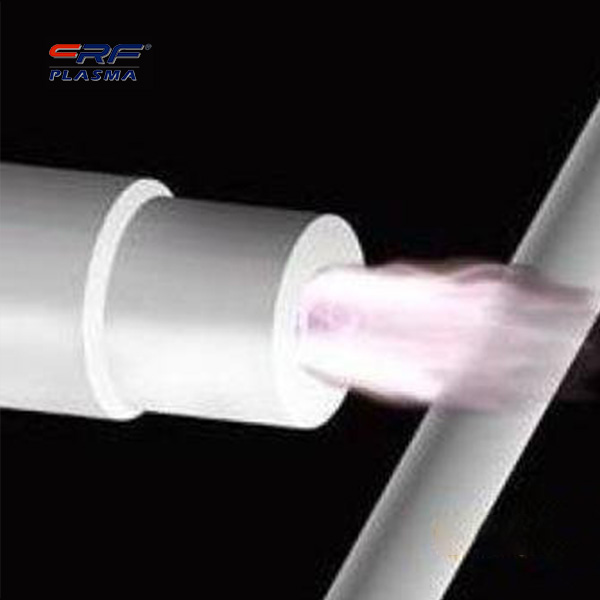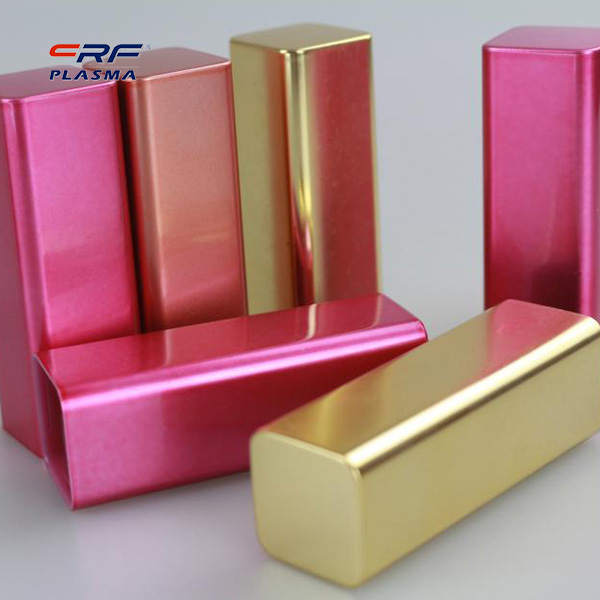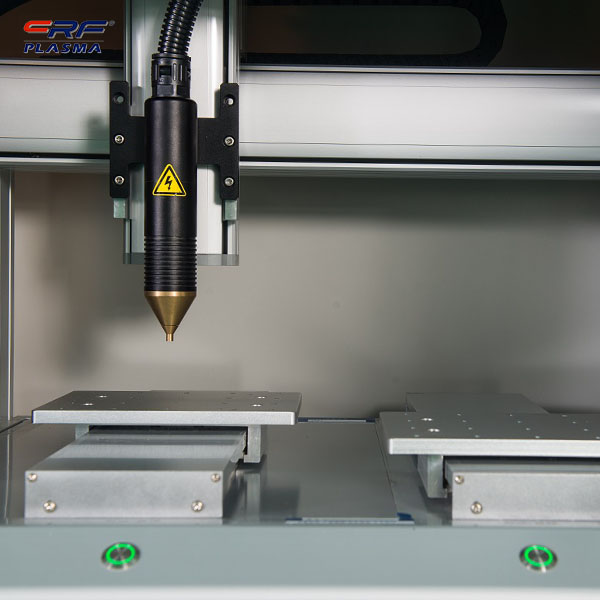
Welcome to Shenzhen Sing Fung Intelligent Manufacturing Co., Ltd.
E-mail:shaobo@sfi-crf.com
The characteristics of the monomer selective solvent effect of plasma-initiated polymerization of plasma activation machine
- Categories:Technical Support
- Author:Plasma cleaning machine-CRF plasma plasma equipment-plasma surface treatment machine manufacturer-chengfeng intelligent manufacturing
- Origin:
- Time of issue:2021-12-11
- Views:
(Summary description)The characteristics of the monomer selective solvent effect of plasma-initiated polymerization of plasma activation machine: The decaying chain transfer (DT) polymerization of iodine transfer is achieved by adding a chain transfer agent containing iodine to the polymerization system to establish a reversible chain transfer balance between free radicals and iodine, thereby achieving the purpose of controlled/living free radical polymerization. DT polymerization has obvious advantages, including easy access to chain transfer agents, wide adaptation of monomers, low requirements for polymerization conditions, and diversified polymerization methods. Iodoforms such as iodoform, ethyl iodoacetate, and iodoacetonitrile have been used in DT controlled/living polymerization as chain transfer agents. The active species of plasma-initiated polymerization by plasma activation machine can be terminated by conventional free radical polymerization inhibitors, and the sequence structure of random copolymers is also similar to ordinary free radical copolymers, so it is generally believed that they follow the free radical polymerization mechanism. However, plasma-induced polymerization has unique phenomena, such as long-lived active species, solvent effects, monomer selectivity, and monomer concentration dependence of the maximum polymerization rate. These characteristics cannot be explained by traditional free radical polymerization theory. . The structure of plasma-initiated polymerization active species has the viewpoints of ionic radicals, diradicals and cations. The PP film is treated with Ar plasma, the plasma active species generated on the surface can initiate the polymerization of vinyl monomers, and follow the free radical polymerization mechanism. Exposing the PP film treated by the plasma activator to the air, the free radicals on the surface of the film will immediately react with oxygen to generate peroxide, and the peroxide initiates polymerization into a classic free radical polymerization. Introducing alkyl iodide into plasma and peroxide initiation system can realize DT controllable/living polymerization. There are active species on the surface of the PP film of the plasma initiation system of the plasma activation machine and the plasma atmosphere. In the peroxide initiation system, due to the homolysis of the peroxide, the free radicals on the surface of the PP film will also be easily Into the solution, the polymerization system will simultaneously undergo PP surface graft polymerization and solution polymerization. In RAFT graft polymerization, the surface of the carrier has the same activity as free radicals in the solution. Therefore, it can be considered that the molecular weight of PAAc grafted on the surface of the PP film is equivalent to the molecular weight of PAAc in the solution. Because the graft polymerization is a heterogeneous reaction, the graft polymerization rate on the surface of the PP film is much lower than the polymerization rate in the solution. Therefore, it can be speculated that the molecular weight of the PAAc chain grafted on the surface of the PP film will also be much smaller than the PAAC obtained in the solution polymerization. Homopolymer molecular weight. The monomer selectivity and solvent effect of the plasma-initiated polymerization of the plasma activation machine cannot be explained by the classic free radical polymerization mechanism, which indicates that the active species in the plasma-initiated system is an "atypical" free radical. The difference in polymerization behavior indicates that ordinary free radicals are easier to combine with iodoform into the controllable state of DT polymerization than plasma active species. For peroxide and plasma-initiated DT polymerization, the grafting amount is directly proportional to the molecular weight, indicating that the chain length of the grafted chain or the size of the grafting amount can be easily adjusted by controlling the polymerization time. This behavior is for porous The graft modification of the membrane surface is of great significance. The contact angle of the grafted surface of DT polymerization initiated by plasma and peroxides continued to decrease with the increase of the grafting amount. This is due to the increase of hydrophilic carboxyl groups on the surface. The contact angle curve of the former is obviously lower than that of the latter, indicating that the longer PAAc graft chain under the same graft amount is more conducive to the reduction of contact angle. In plasma DT polymerization kinetics treatment, the surface grafting amount of PP film is proportional to the polymer molecular weight. At the same time, as the grafting amount increases, the surface contact angle also gradually decreases.
The characteristics of the monomer selective solvent effect of plasma-initiated polymerization of plasma activation machine
(Summary description)The characteristics of the monomer selective solvent effect of plasma-initiated polymerization of plasma activation machine:
The decaying chain transfer (DT) polymerization of iodine transfer is achieved by adding a chain transfer agent containing iodine to the polymerization system to establish a reversible chain transfer balance between free radicals and iodine, thereby achieving the purpose of controlled/living free radical polymerization. DT polymerization has obvious advantages, including easy access to chain transfer agents, wide adaptation of monomers, low requirements for polymerization conditions, and diversified polymerization methods. Iodoforms such as iodoform, ethyl iodoacetate, and iodoacetonitrile have been used in DT controlled/living polymerization as chain transfer agents.
The active species of plasma-initiated polymerization by plasma activation machine can be terminated by conventional free radical polymerization inhibitors, and the sequence structure of random copolymers is also similar to ordinary free radical copolymers, so it is generally believed that they follow the free radical polymerization mechanism. However, plasma-induced polymerization has unique phenomena, such as long-lived active species, solvent effects, monomer selectivity, and monomer concentration dependence of the maximum polymerization rate. These characteristics cannot be explained by traditional free radical polymerization theory. . The structure of plasma-initiated polymerization active species has the viewpoints of ionic radicals, diradicals and cations.
The PP film is treated with Ar plasma, the plasma active species generated on the surface can initiate the polymerization of vinyl monomers, and follow the free radical polymerization mechanism. Exposing the PP film treated by the plasma activator to the air, the free radicals on the surface of the film will immediately react with oxygen to generate peroxide, and the peroxide initiates polymerization into a classic free radical polymerization. Introducing alkyl iodide into plasma and peroxide initiation system can realize DT controllable/living polymerization.
There are active species on the surface of the PP film of the plasma initiation system of the plasma activation machine and the plasma atmosphere. In the peroxide initiation system, due to the homolysis of the peroxide, the free radicals on the surface of the PP film will also be easily Into the solution, the polymerization system will simultaneously undergo PP surface graft polymerization and solution polymerization.
In RAFT graft polymerization, the surface of the carrier has the same activity as free radicals in the solution. Therefore, it can be considered that the molecular weight of PAAc grafted on the surface of the PP film is equivalent to the molecular weight of PAAc in the solution. Because the graft polymerization is a heterogeneous reaction, the graft polymerization rate on the surface of the PP film is much lower than the polymerization rate in the solution. Therefore, it can be speculated that the molecular weight of the PAAc chain grafted on the surface of the PP film will also be much smaller than the PAAC obtained in the solution polymerization. Homopolymer molecular weight.
The monomer selectivity and solvent effect of the plasma-initiated polymerization of the plasma activation machine cannot be explained by the classic free radical polymerization mechanism, which indicates that the active species in the plasma-initiated system is an "atypical" free radical. The difference in polymerization behavior indicates that ordinary free radicals are easier to combine with iodoform into the controllable state of DT polymerization than plasma active species.
For peroxide and plasma-initiated DT polymerization, the grafting amount is directly proportional to the molecular weight, indicating that the chain length of the grafted chain or the size of the grafting amount can be easily adjusted by controlling the polymerization time. This behavior is for porous The graft modification of the membrane surface is of great significance.
The contact angle of the grafted surface of DT polymerization initiated by plasma and peroxides continued to decrease with the increase of the grafting amount. This is due to the increase of hydrophilic carboxyl groups on the surface. The contact angle curve of the former is obviously lower than that of the latter, indicating that the longer PAAc graft chain under the same graft amount is more conducive to the reduction of contact angle.
In plasma DT polymerization kinetics treatment, the surface grafting amount of PP film is proportional to the polymer molecular weight. At the same time, as the grafting amount increases, the surface contact angle also gradually decreases.
- Categories:Technical Support
- Author:Plasma cleaning machine-CRF plasma plasma equipment-plasma surface treatment machine manufacturer-chengfeng intelligent manufacturing
- Origin:
- Time of issue:2021-12-11 20:45
- Views:
The characteristics of the monomer selective solvent effect of plasma-initiated polymerization of plasma activation machine:
The decaying chain transfer (DT) polymerization of iodine transfer is achieved by adding a chain transfer agent containing iodine to the polymerization system to establish a reversible chain transfer balance between free radicals and iodine, thereby achieving the purpose of controlled/living free radical polymerization. DT polymerization has obvious advantages, including easy access to chain transfer agents, wide adaptation of monomers, low requirements for polymerization conditions, and diversified polymerization methods. Iodoforms such as iodoform, ethyl iodoacetate, and iodoacetonitrile have been used in DT controlled/living polymerization as chain transfer agents.
The active species of plasma-initiated polymerization by plasma activation machine can be terminated by conventional free radical polymerization inhibitors, and the sequence structure of random copolymers is also similar to ordinary free radical copolymers, so it is generally believed that they follow the free radical polymerization mechanism. However, plasma-induced polymerization has unique phenomena, such as long-lived active species, solvent effects, monomer selectivity, and monomer concentration dependence of the maximum polymerization rate. These characteristics cannot be explained by traditional free radical polymerization theory. . The structure of plasma-initiated polymerization active species has the viewpoints of ionic radicals, diradicals and cations.
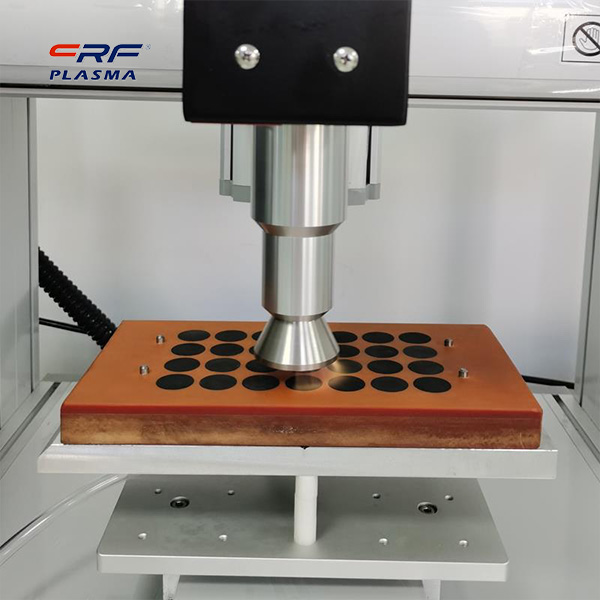 The PP film is treated with Ar plasma, the plasma active species generated on the surface can initiate the polymerization of vinyl monomers, and follow the free radical polymerization mechanism. Exposing the PP film treated by the plasma activator to the air, the free radicals on the surface of the film will immediately react with oxygen to generate peroxide, and the peroxide initiates polymerization into a classic free radical polymerization. Introducing alkyl iodide into plasma and peroxide initiation system can realize DT controllable/living polymerization.
The PP film is treated with Ar plasma, the plasma active species generated on the surface can initiate the polymerization of vinyl monomers, and follow the free radical polymerization mechanism. Exposing the PP film treated by the plasma activator to the air, the free radicals on the surface of the film will immediately react with oxygen to generate peroxide, and the peroxide initiates polymerization into a classic free radical polymerization. Introducing alkyl iodide into plasma and peroxide initiation system can realize DT controllable/living polymerization.
There are active species on the surface of the PP film of the plasma initiation system of the plasma activation machine and the plasma atmosphere. In the peroxide initiation system, due to the homolysis of the peroxide, the free radicals on the surface of the PP film will also be easily Into the solution, the polymerization system will simultaneously undergo PP surface graft polymerization and solution polymerization.
In RAFT graft polymerization, the surface of the carrier has the same activity as free radicals in the solution. Therefore, it can be considered that the molecular weight of PAAc grafted on the surface of the PP film is equivalent to the molecular weight of PAAc in the solution. Because the graft polymerization is a heterogeneous reaction, the graft polymerization rate on the surface of the PP film is much lower than the polymerization rate in the solution. Therefore, it can be speculated that the molecular weight of the PAAc chain grafted on the surface of the PP film will also be much smaller than the PAAC obtained in the solution polymerization. Homopolymer molecular weight.
The monomer selectivity and solvent effect of the plasma-initiated polymerization of the plasma activation machine cannot be explained by the classic free radical polymerization mechanism, which indicates that the active species in the plasma-initiated system is an "atypical" free radical. The difference in polymerization behavior indicates that ordinary free radicals are easier to combine with iodoform into the controllable state of DT polymerization than plasma active species.
For peroxide and plasma-initiated DT polymerization, the grafting amount is directly proportional to the molecular weight, indicating that the chain length of the grafted chain or the size of the grafting amount can be easily adjusted by controlling the polymerization time. This behavior is for porous The graft modification of the membrane surface is of great significance.
The contact angle of the grafted surface of DT polymerization initiated by plasma and peroxides continued to decrease with the increase of the grafting amount. This is due to the increase of hydrophilic carboxyl groups on the surface. The contact angle curve of the former is obviously lower than that of the latter, indicating that the longer PAAc graft chain under the same graft amount is more conducive to the reduction of contact angle.
In plasma DT polymerization kinetics treatment, the surface grafting amount of PP film is proportional to the polymer molecular weight. At the same time, as the grafting amount increases, the surface contact angle also gradually decreases.
Scan the QR code to read on your phone

TEL:0755-3367 3020 / 0755-3367 3019

E-mail:sales-sfi@sfi-crf.com

ADD:Mabao Industrial Zone, Huangpu, Baoan District, Shenzhen





